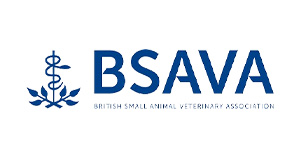Someone’s Coughing, And It’s Not Covid
Publish on: Dec 15, 2021
We find ourselves once again in a time of cool weather, fewer hours of daylight, and rain, and with this more animals being housed. Many factors act in concert to cause an increase in incidence of pneumonia in calves, with higher levels of moisture, added environmental stressors, different ages housed under one roof, and an increase in stocking density being a few of the common culprits.
We recently evaluated a three year trend on sales of respiratory disease treatments (Zeleris and Zactran) in comparison to doses of calf respiratory vaccinations sold. We compared these results alongside weather trends (average temperature and humidity) to evaluate annual variations.
Graph 1 indicates the total number of vaccine doses sold annually in comparison to the number of doses sold of Zeleris on Zactran (calculated based on a 100kg calf). The period between November 2018 and October 2019 saw more doses of pneumonia medications sold than of respiratory vaccinations. This shows that there were more animals treated for respiratory disease than those given preventative doses of vaccinations. The numbers changed the following year, with a significant decline in sales of pneumonia medications and increase in sales of respiratory vaccinations. Vaccination sales have continued to increase through to this year, with nearly 3,000 additional doses sold in the last 12 months in comparison to two years ago. There has been a slight increase in pneumonia medication sales from last year to this year. Weather (temperature and humidity) were considered when looking at the results, and data on this can be found in Graph 2.
Graph 2 shows the temperature and humidity trends from November 2018 up to October 2021 based on monthly averages. Humidity is inversely proportional to temperature, with higher humidity seen during winter months and lower during late spring and summer. As you can see in the graph, the relative humidity over the 2020-2021 winter was higher than that seen during the 2019-2020 winter, which may in part contribute to higher incidence of pneumonia over the past 12 months. Cooler weather during winter with a more abrupt increase in temperature in late spring, higher humidity, and a later start to the growing season likely meant animals were housed for longer, which would be another contributing factor to increased incidence of pneumonia.
So what is the take-home message?
With increase in sales of respiratory vaccines, we have seen a decrease in need for medical treatment of pneumonia cases. There will always be year-to-year variation due to weather (temperature and humidity). Preventative measures (in addition to vaccinating your calves) include modifications to the environment to allow for improved ventilation (fresh air and air speed), less moisture (keeping bedding dry, for example), decreased stressful events, and fewer mixing of age groups.
Remember, AN OUNCE OF PREVENTION IS WORTH A POUND OF CURE.
We hope to see a continuation of these trends, striving for improved preventative measures and less need for treatment of disease in the years to come.

Graph 1. Pneumonia vaccinations versus treatment sales.

Graph 2: Average monthly temperature and humidity over time from November 2018 to October 2021.











